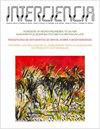不同训练方案组15秒动态跑步模型的构建。其动态与预测
IF 0.4
4区 综合性期刊
Q4 ECOLOGY
引用次数: 0
摘要
摘要目的:通过实验了解某高校乒乓球运动组课程中有氧运动课对学生速度(原地跑15秒)的影响,探讨在体育课程中加入有氧运动课的必要性。材料:106名一年级学生参加实验(对照组53人,实验组53人)。提出了R/S法对实验数据进行处理。第一阶段进行了确定试验。第二阶段,将有氧运动引入乒乓球课程。第三阶段进行重复对比实验,目的是检验有氧课对学生速度的影响程度。结果:实验结束时(5月),实验组学生的成绩与对照组学生的成绩有质的差异。实验结果表明,有必要将健美操课程纳入运动取向群体学生的体育课程,特别是乒乓球(分段课)。实验方案结合了运动导向(部分课程)的训练计划,乒乓球课程占总课程的75%,有氧课程(交叉训练和基础有氧运动)占25%。结论:实验证明,方法方法结合了普遍接受的发展体育素质的手段和最新的提高体育素质的方法,对体育取向群体学生体育教育计划的发展是有效的。本实验证明,在以运动为导向的教学方案(分段课)中发展和纳入乒乓球、有氧课程(交叉训练和基础有氧要素)对学生15秒跑的效果较好。指数平滑的方法使预测未来的结果成为可能。本文章由计算机程序翻译,如有差异,请以英文原文为准。
CONSTRUCTION OF A 15-SECOND DYNAMIC RUNNING MODEL FOR GROUPS WITH DIFFERENT TRAINING PROGRAMS. ITS DYNAMICS AND PREDICTION
Abstract. Purpose: to experimentally find out whether aerobic classes included in the program of sports-oriented table tennis groups of a higher educational institution have an effect on the speed of students (running for 15 seconds in place) and to investigate the necessity of including these classes in the curriculum of physical education. Materials: 106 first-year students participated in the experiment (53 – control group and 53 – experimental). The R/S method was proposed for processing experimental data. At the first stage, a ascertaining experiment was conducted. At the second stage, the introduction of aerobic activities into the table tennis curriculum. At the third stage, a repeated comparative experiment was conducted, the purpose of which was to check the degree of influence of aerobic classes on the speed of students. Results: at the end of the experiment (May), the results of the students of the experimental group were qualitatively different from the results of the students of the control group. The results of the experiment indicate the need to include aerobic classes in the curriculum for physical education of students in sports-oriented groups, in particular (sectional classes) table tennis. The experimental program combines a training program with a sports orientation (sectional classes) in table tennis - 75% of the total and aerobic classes (cross training and basic aerobics) - 25%. Conclusions: the effectiveness of the methodological approach to the development of a physical education program for students of groups with a sports orientation, which combines generally accepted means of developing physical qualities and the latest methods for their improvement, has been experimentally proven. This experiment proved that the development and inclusion of table tennis, aerobic classes (cross training and elements of basic aerobics) in the educational program with a sports orientation (sectional classes) had a better effect on students\' running of the 15-second run. And the method of exponential smoothing makes it possible to predict future results.
求助全文
通过发布文献求助,成功后即可免费获取论文全文。
去求助
来源期刊

Interciencia
综合性期刊-生态学
CiteScore
0.80
自引率
25.00%
发文量
1
审稿时长
4-8 weeks
期刊介绍:
Interciencia is the monthly multidisciplinary publication of the INTERCIENCIA Association. It is dedicated to stimulate scientific research, its humanitarian use and the study of its social context, specially in Latin America and the Caribbean and to promote communication between the scientific and technological communities of the Americas.
Interciencia has been published uninterruptedly since 1976. Its Founding Director, Marcel Roche (endocrinologist and sociologist of science) was editor until 2008, and thereafter Miguel Laufer (neurobiologist) has been in charge. It has been included since 1978 in the Science Citation Index and other international indexes, and since 2008 it maintains an open access electronic version with material from 2005 onwards.
The priority areas of the journal, without exclusion of other areas, are Agronomy, Arid Lands, Food and Nutrition, Biotechnology, Ecology and Environment, Energy, Innovation and Technology Transfer, Marine Resources, Non-renewable Resources, Science Education, Science Policy, Study and Sociology of Science, and Tropical Forests.
Interciencia publishes in Spanish, Portuguese and English research and review articles, communications and essays, all of which are subjected to peer review. Additionally, it includes non-refereed sections such as Editorial, Letters to the Editor, Open Town Hall, Book Reviews and Upcoming Events.
All the material submitted to the journal for publication and accepted by the Editorial Committee in view of its quality and pertinence is subjected to review by peer specialists in the corresponding fields of knowledge. Neither the INTERCIENCIA Association, nor the journal or the institutions to which the authors belong carry responsibility for the contents. Signing authors are responsible for the material published under their names.
 求助内容:
求助内容: 应助结果提醒方式:
应助结果提醒方式:


